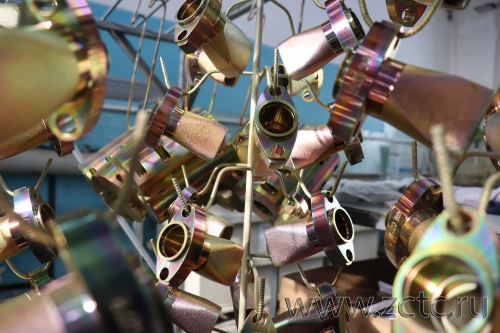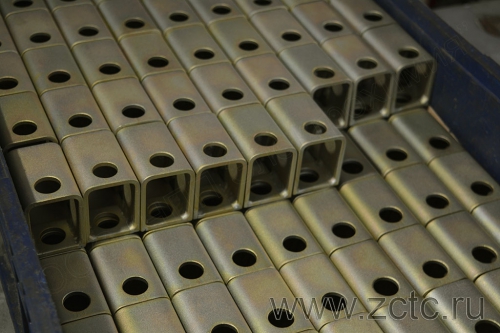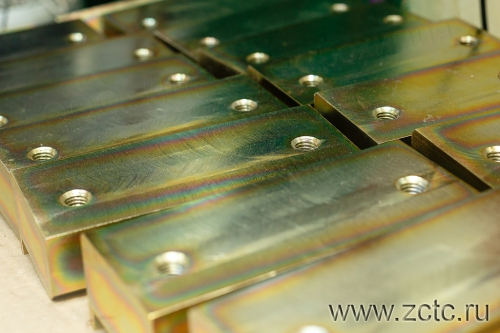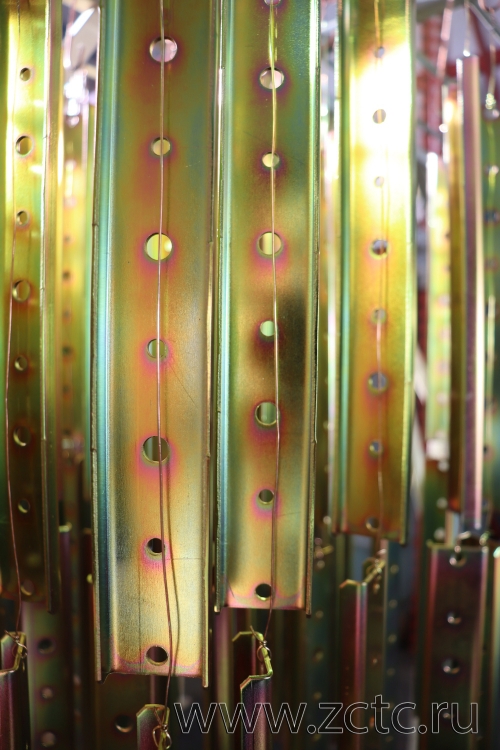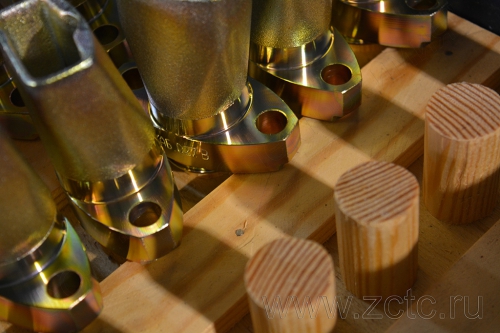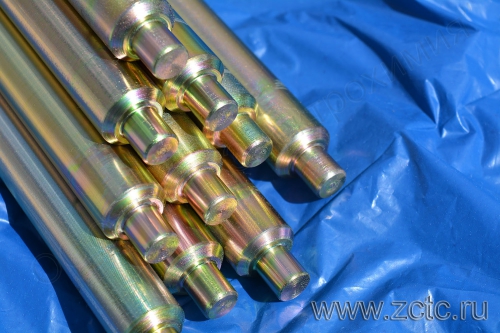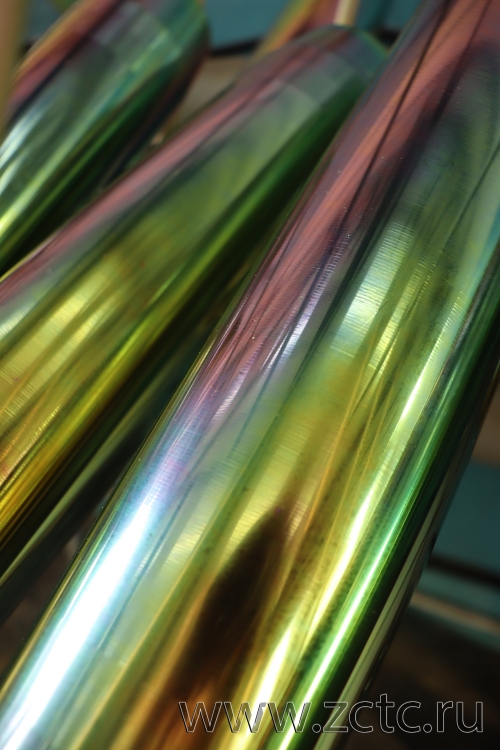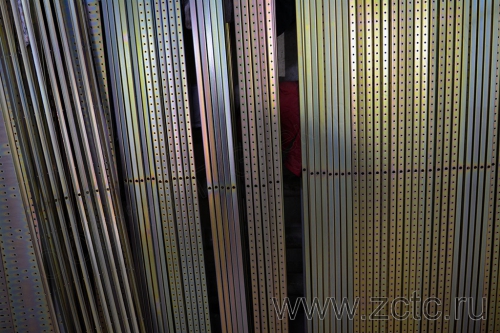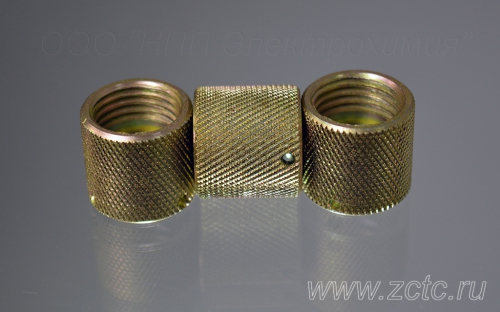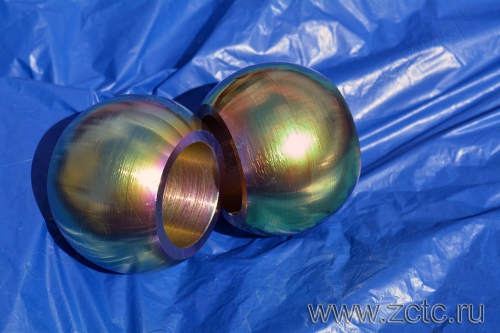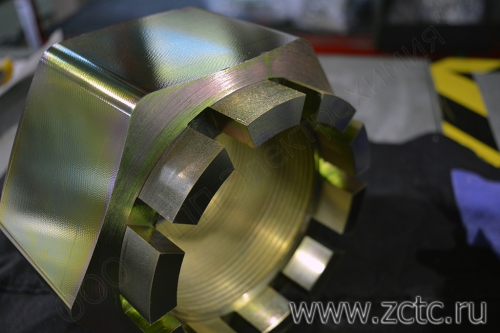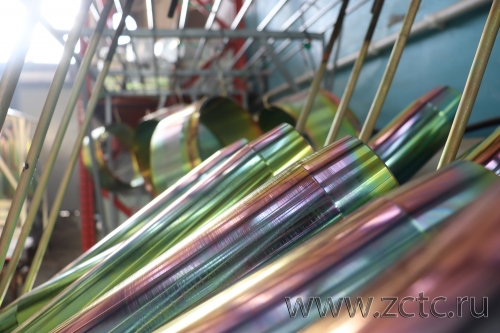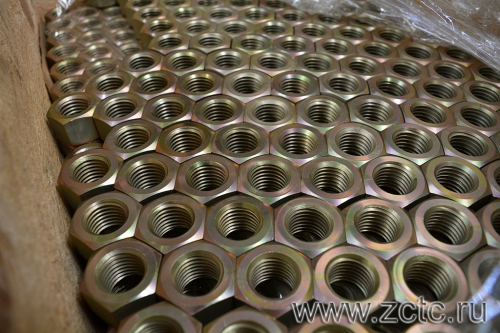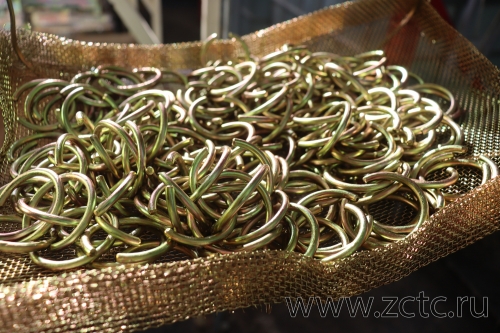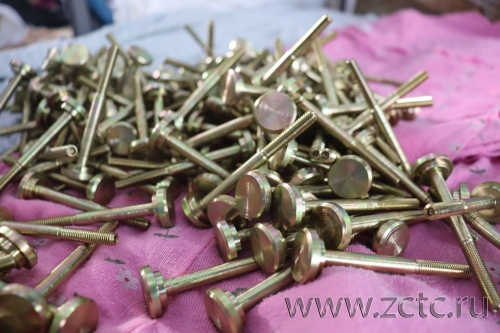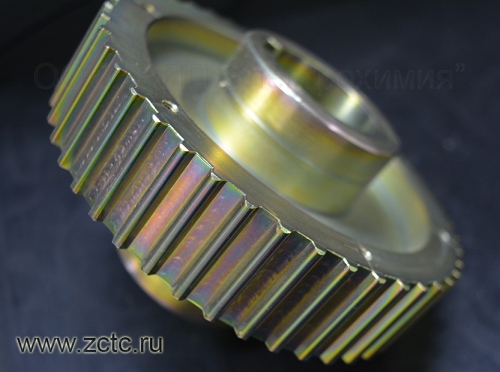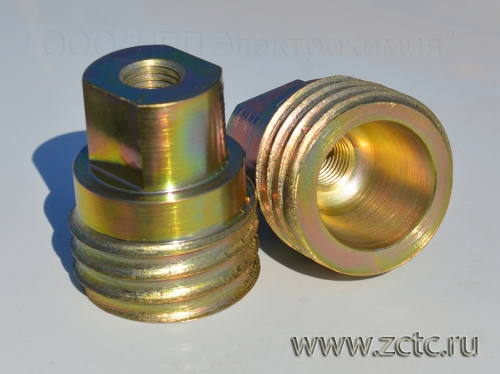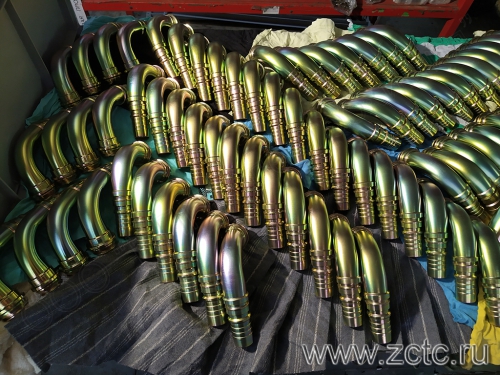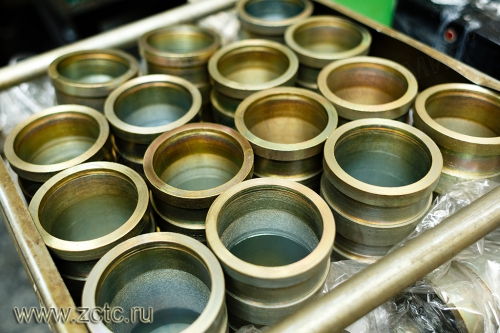ZINC-PLATING RAINBOW
Description
The main task of galvanic zinc plating with rainbow chroming is to protect steel products from corrosion in atmospheric conditions conditions and a neutral aqueous environment at temperatures up to 70o C. Depending on the required degree of protection of the metal surface, the coating thickness can range from 6 to 50 microns or more. The use of thicknesses less than 6 microns is impractical, because the protective characteristics of the coating will be unacceptably low. The thickness of the external rainbow chromate film is 0.25-0.5 microns. The content of hexavalent chromium in it varies from 80 to 220 mg/m2. The durability of yellow zinc in 5% salt spray is 200-300 hours. The corrosion rate of non-passivated zinc depends on pH:

Galvanizing can be carried out using different technologies. Shiny coatings are more hard and less flexible than semi-shiny ones. The type of passivation has virtually no effect on microhardness. The electrical resistivity is slightly higher than that of metallurgical zinc due to the inclusion of carbon and sulfur from the electrolyte in the coating composition (up to 1%). It should be remembered that the contact resistance of zinc may vary depending on the passivation method. Colorless film will have the lowest resistance, iridescent - average, olive and phosphate - the highest.
You can order the service of galvanic galvanizing of steel in accordance with GOST 9.305-84 by phone and email specified in the section "CONTACTS".
Characteristics
|
Designation (example) |
Z |
|
Thickness |
6-50 microns (greater thickness is possible) |
|
Microhardness |
490-1180 MPa |
|
Electrical resistivity at 18oC |
5.75×10-8 Ohm⋅m |
|
Permissible operating temperature |
300o C |
Advantages of galvanizing:
- Rainbow zinc has high corrosion resistance in neutral environments, second only to olive chromated zinc. With a thickness of 24 microns, it can be used in harsh operating conditions.
- It is an anode to steel and protects it from corrosion at temperatures up to 70°; C electrochemically, and at higher temperatures - mechanically, i.e. cathodic The anodic nature of the zinc coating protection allows you to protect products even in the presence of through damage: scratches, pores, chips. In its ability to protect steel from corrosion in neutral environments, zinc is superior to all types of oxidation and passivation, as well as all types of cathodic coatings: nickel, chromium, copper at a similar thickness.
- Prevents contact corrosion when mating steel with aluminum parts, which is especially important in electrical engineering.
- Ensures easy screwing of threaded parts.
- Improves the appearance and aesthetic characteristics of products.
- Iridescent chromate film on zinc coating has the property of “self-healing”, i.e. is able to restore its protective properties in case of minor mechanical damage. Conventional chromite, phosphate and oxide films do not have this effect.
- The yellow zinc coating produced at our enterprise is ductile, withstands bending and flaring, thanks to the use of unique shine-forming additives in the electrolyte. It also has a high uniformity in thickness, which is confirmed by metallographic studies:

Disadvantages of galvanizing:
- Iridescent chromate film on zinc is unstable to abrasion and loses its decorative appearance under periodic mechanical stress.
- Electrochemical galvanizing causes some loss of steel ductility due to hydrogenation. Steels with a tensile strength higher than 1380 MPa are not subject to galvanizing.
- Zinc coating has increased brittleness at temperatures above 250°C and below minus 70°C.
- Zinc is poorly resistant to the effects of products released during the aging of organic materials.

Do you want to become our client?
Just leave your request by filling out the form on the right and we will contact you as soon as possible. Thank you!

By submitting an application, you agree to processing of your personal data. Your data is protected.





